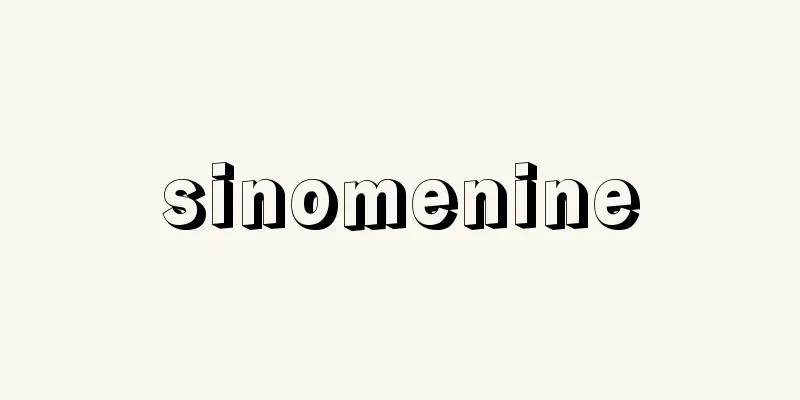Far Eastern Commission

|
This was the policy-making body for the Allied Powers' occupation of Japan after World War II, and was established in Washington. Initially, the United States proposed the establishment of the Far Eastern Advisory Commission, and the decision to establish the commission was made at a five-nation conference of foreign ministers from the United States, Great Britain, what was then the Soviet Union, China, and France, held in London from September 10 to October 2, 1945 (Showa 20). This was intended to ensure that the Allied powers other than the United States would only be able to respond to consultations and would not have a say in deciding the occupation policy for Japan. The Soviet Union opposed this decision and boycotted participation in the commission. Britain also began to show dissatisfaction with this approach. As a result, the United States made a concession at the Moscow Tripartite Foreign Ministers' Conference (US, UK, and USSR) in December 1945, and it was decided to establish the Far Eastern Commission. The committee consisted of 11 countries: the United States, the UK, the USSR, China, France, India, the Netherlands, Canada, Australia, New Zealand, and the Philippines (Burma (now Myanmar) and Pakistan joined in November 1949). The US, the UK, the USSR, and China were also given veto power. The Far Eastern Commission was not merely an advisory body, but a policy-making body, and its specific duties included implementing the surrender clauses stipulated in the Potsdam Declaration, formulating policies and principles for the occupation of Japan (excluding military and territorial issues), and reviewing the implementation of policies by the Supreme Commander for the Allied Powers. The Far Eastern Commission reflected the anti-fascist and democratic international public opinion, which imposed certain restrictions on the initial occupation policy towards Japan, and would have an impact on postwar democratic reforms, particularly constitutional amendments and land reforms. However, although the Far Eastern Commission certainly had stronger powers than the Far Eastern Advisory Commission, it still recognized the superiority of the United States. For example, as one of the four great powers, the United States was granted veto power, so no decisions were made that went against the will of the country, and the decisions of the Far Eastern Commission were sent to the Supreme Commander of the Allied Powers as directives via the US government, making it easier for America's unique interests to be reflected. Furthermore, in times of emergency, the US government was given the authority to exercise "intermediate command powers" without waiting for the decision of the Far Eastern Commission, allowing it to pursue its own interests. Therefore, there was a limit to the extent to which the Far Eastern Commission could regulate occupation policy towards Japan, and the US would in effect carry out a sole occupation of Japan. As the Cold War began and the "US-Soviet conflict" intensified, the Far Eastern Commission's functions essentially ceased, and it disappeared when the Treaty of Peace with Japan came into effect in April 1952. [Yamada Takao] [Reference] |Source: Shogakukan Encyclopedia Nipponica About Encyclopedia Nipponica Information | Legend |
|
第二次世界大戦後の連合国の日本占領政策決定機関で、ワシントンに設置された。当初、アメリカは極東諮問委員会の設置を提案、1945年(昭和20)9月10日から10月2日にかけてロンドンで開かれたアメリカ、イギリス、当時のソ連、中国、フランスの五か国外相会議で、同委員会の設置が決定された。これは、アメリカ以外の連合諸国は諮問に答えるだけで、対日占領政策決定に発言権をもてないようにすることをねらったものであった。ソ連はこの決定に反対し、同委員会への参加をボイコットした。またイギリスもこの方式に不満を示すようになった。 この結果、1945年12月のモスクワ三国外相会議(米・英・ソ)でアメリカが譲歩し、極東委員会の設置が決定された。同委員会の構成は、アメリカ、イギリス、ソ連、中国、フランス、インド、オランダ、カナダ、オーストラリア、ニュージーランド、フィリピンの11か国からなっていた〔49年11月からビルマ(現ミャンマー)、パキスタンが参加〕。また米・英・ソ・中の4か国には拒否権が与えられることになった。極東委員会は単なる諮問機関でなく、政策決定機関とされ、具体的には、ポツダム宣言の規定する降伏条項の実施、対日占領の政策と原則の作成(軍事事項・領土問題を除く)、連合国最高司令官の政策実施の見直し、などの任務をもつことになった。この極東委員会には、反ファシズム・民主主義の国際世論が反映し、初期対日占領政策に一定の規制を加えることになり、とくに憲法改正や農地改革など戦後の民主改革に影響を与えることになる。 しかし、この極東委員会は、確かに極東諮問委員会より権限は強化されていたが、なおアメリカの優越的地位を認めていた。たとえば、アメリカには四大国の一つとして拒否権が認められているので、同国の意志に反する決定は行われず、また極東委員会の決定は、アメリカ政府を通じる指令として連合国最高司令官に送られることになっており、アメリカの独自の利害が反映されやすくなっていた。さらに緊急時には、極東委員会の決定を待たず、アメリカ政府は「中間指令権」を発動する権限を与えられており、自国の利益を貫くことができるようになっていた。したがって、極東委員会による対日占領政策に対する規制には限界があり、事実上、アメリカによる単独占領が行われていくことになる。 やがて冷戦が始まり、「米ソ対立」が激しくなると、極東委員会の機能は、実質上、停止し、1952年4月、対日講和条約の発効とともに消滅した。 [山田敬男] [参照項目] |出典 小学館 日本大百科全書(ニッポニカ)日本大百科全書(ニッポニカ)について 情報 | 凡例 |
<<: Far Eastern School (English: Ecole Française d'Extrême-Orient)
Recommend
Ukon Genzaemon
Year of death: Unknown (Year of death unknown) Yea...
cekk
…In this way, the bill of exchange became a disco...
Kugahara ruins
Located in Kugahara 4-6-chome, Ota-ku, Tokyo, this...
Goldenrod - Goldenrod
...The Akebono-shusuran (G. foliosa Benth.var. la...
Grammitidaceae
...It was named after Okubo Saburo, an assistant ...
Course in Analysis - Course in Analysis
...Thus, the above theorem, which at first glance...
Araba - Araba
...The Basque region is rich in culture, includin...
Kiga Valley
...It has been counted among the Seven Hot Spring...
Guangdong Pass - Guangdong Pass
A customs office located in Guangzhou (Canton), C...
Sakura doll - Sakura doll
A doll that has been Japanized using French doll-m...
Mitsumasa Yonai
A military man and politician of the Showa period...
Gracchi Brothers - Gracchi Brothers
Two brothers who were reformist politicians from ...
Agemizuura - Agemizuura
...When restored based on the depiction of human ...
ICCF - ICCF
...This has a similar meaning to the ranks in sho...
Vaccinium angustifolium (English spelling) Vacciniumangustifolium
… [Matsui Jin]. … *Some of the terminology that m...









